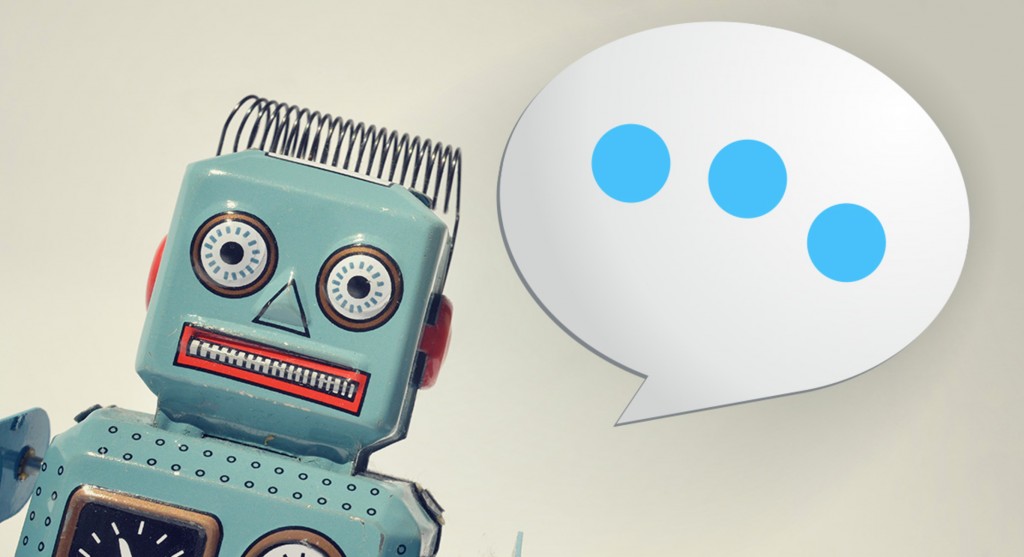by John Onorato

Let’s face it: Most of the chatbot experiences today are pretty wretched.
They’re stilted, artificial and in some cases downright affected. Natural language processing is still in its infancy, and has a long way to go before sounding actually “natural.” Or truly understanding natural speech, for that matter.
This is due in part to the difficulty of designing a user interface around a conversation, which is non-hierarchical in nature. When talking to another person, the steps don’t always flow naturally from one to the other. This kind of design is also fundamentally different than either a mobile or web interface.
Additionally, we have yet to develop a general-purpose AI which can accept a user’s open-ended input.
It is incumbent on chatbot creators, therefore, to pick out engaging patterns of interaction. Building on and around these will enable developers to create whole experiences that will delight the users.
So how do we work around the limitations of a conversational UI, knowing the above?
About the UI
Up until now, User Interfaces have been crafted for a linear experience, not a random one. In other words, after the user comes to the page, a specific sequence of events typically happen, at least in terms of ecommerce.
First they search for an item or two. Those items are then added to the user’s cart. They enter payment information, check out and leave the site.
A chat based UI is completely different from either a web or mobile interface. One of the biggest stumbling blocks is that the customer can initiate the procedure in different places. Say they want to buy tickets for a movie. The customer can ask a bot “What’s playing around 8pm?” Another valid starting point can be “I want three tickets to Trolls at the Regal on Little Texas Lane and Congress.”
So we see that a big challenge for anyone wanting to design a chatbot is that the path a customer will use to reach their goal (in this case, to purchase tickets) is not known beforehand. The chatbot has to assist the user and provide the desired answers without needing a discussion to progress in a straight line.
The AI Factor

The next big stumbling block for chatbot developers is that a true AI that works on a variety of inputs is still a long way off. AIs themselves are not especially new, but they are new to the consumer marketplace. One AI-like construct that bot creators use a lot is the Simple Linear Tree, which forces the user down a predetermined path. New AI routines might also be used, but these are not true AI. They simply match patterns against pre-programmed conditions, in an effort to determine a user’s intent.
Generally speaking, these work well enough when there are a finite set of ways a user can interact with a bot. But as developers are finding out, user input can be totally random. This leads to situations where a bot can get unexpected input that it can’t handle. So without better tools, a better AI, it’s all a matter of hunt and peck. Or worse, finding the linguistic needle in a haystack of possibilities.
The Solution: Modify, Publish, Iterate, Repeat
So how does a bot developer succeed with the limited tools they have? The best path is not already defined, given the variety of inputs. Neither the number of inputs nor their content is known. There has to be a quick, iterative path to successful completion, and it has to be low-cost as well. A developer needs to be aware of how their bots are responding to the inputs provided by the user. With this knowledge, they can then iterate on what is already there. Any blocks between the user and their goal need to be addressed.
Experience has shown that the best tools for the iterative method are bot native. This means they are able to understand the complexity and nuance of a conversational interface, and are able to translate them into clear metrics. Conversely, it also means the user is not simply dumped into meaningless dialogues or dashboards.
Marketing teams can use these tools to pinpoint groups of similar users, then connect with them through personalized messages. Creative and editorial teams can use them to address messaging that may be off-brand or that doesn’t have the desired tone. Business leaders can use them to provide a detailed picture of their efforts without the use of an engineering team and a data scientist just to “run the numbers.”
It’s important to have a conversational UI that’s easy to understand. It’s also important to iterate quickly on this. Being able to do these things will assist business leaders to grow differentiated bot-native arms that can leverage the great power found behind the conversational interface./hea






